-
Content
1,063 -
Joined
-
Last visited
Never -
Feedback
0%
Posts posted by yuri_base
-
-
LeeroyJenkinsFoam- Between the knees sounds like a very small wing.
Not much smaller than, for example, a V-4 leg wing, which BTW also has an exposed leading edge, just very short. On my V-2, which I have cut in half by a ACME Cutting Edge professional, with waist belt fitted to use as "Superman's pantz", I later cut the leading edge to the knees, making a longer LE and higher AR leg wing. It still flew like a champ, although because there was no reinforcement tape between the knees, the fabric started tearing apart.QuoteAlso my statements about the foam fitting in a plane still apples. It's already uncomfortable enough to be stuffed in a plane with our cloth suits.
Leg wing, when legs are pushed together, folds in half and one doesn't have to sit with legs spread out. Arm wings also should fold easily. Not so much volume as it may seem. One or two such jumpers on a load should not be a problem.QuoteAoI- how are you going to attached them outside the constraints of the human airframe?
Not outside. On the legs, there's enough range to tilt the wing by up to 15 degrees or so. On the arms, arm wings will be attached to platform on the belly extending to the sides a bit, like a corset. Again, some range for AoI adjustment is possible.QuoteIt doesn't matter if your wing has a nice L/D if its too small to do anything useful.
I've (and many many others) been jumping in tiny Phantom-1, no problem for many sites, for years. If it doesn't start as quickly as low WL mattresses, and site demands it, the solution is obvious - jump this site in a mattress. Right tool for the right job.QuoteWingsuits have terrible AR and in order to get a better L/D there needs to be a higher AR and wing profile.
We have to work with what we've got. We'll have to see... But to see, one needs to do. So, I'm inviting everybody interested to start working on these things. Foam is not so expensive, $60-80 will buy a big sheet of thick foam enough for 3 wings. Belts, zippers, some ZP or even PVC fabric - it's not expensive. Foam cuts easily with a hot nichrome wire. The bill of materials, even for a single DIY project, should be within $100-150 range.
MWGA already! Everybody,
Wake up
Grab a brush and put a little (makeup)
Grab a brush and put a little
(Massive Attack, Chop Suey!) Android+Wear/iOS/Windows apps:
Android+Wear/iOS/Windows apps:
L/D Vario, Smart Altimeter, Rockdrop Pro, Wingsuit FAP
iOS only: L/D Magic
Windows only: WS Studio -
LeeroyJenkinsModular foam- how are you going to structurally support the foam leg wing?
Foam leg wing is a trapezoid shape, with real airfoil profile, with leading edge between the knees (just below) and trailing edge at the ankles or bottoms of shoes. It is attached to lower legs with belts or quick detach mechanism, e.g. plastic platforms attached to lower legs with straps, the leg wing attaches to platforms with some mechanism (in my 2008 leg wing prototype, it was simply strong zippers).QuoteHow are you going to fit that hard foam in a full otter? or a 182? How are you going to carry that foam up the side of a mountain?
Nota bene: when I talk "foam", I mean high-quality, closed cell polyurethane foam used for seats in auto industry, furniture, mattresses, etc. Usually blue or green foam. It's compressible and resilient. It's NOT hard white foam that is used for packaging or home insulation, the one that easily snaps and consists of fused small balls. THIS:
[inline high-resilience-foam.jpg]
It's easily compressible (in fact, if one orders it online, they ship it in vacuum plastic bag, taking much less volume than expanded). Yet it holds its shape very well (that's why it's used in furniture).
Fitting it in the plane (provided that it's not filled to the rim with 23 "foam jumpers") should not be a big deal, it's a bit bulkier than a big cloth wingsuit, but not that much. Carrying to the mountain should not be hard, too - it's light (finished system won't be much heavier than a modern mattress suit), but probably will need to be attached to the outside of the stashbag.QuoteAoI- How are your going to structurally support that?
Both leg and arm wing attachment platforms will have ability to attach wings with variable AoI.QuoteTrim- this has been done and is ever evolving.
After I pounded it in in WSMs from 2006 to 2007-8, took a lot of resistance, too. See Jeff N's reply quoted from an old thread above.QuoteProfile- this has also been done.
Yes, but foam allows full profile, not truncated like what we have on the arms, and full, nice, and exposed LE on the leg wing as well. Also, foam allows wing to be completely smooth span-wise, without any "pillowing" and without any rib stitches.
Also, ram inlets are no longer necessary, saving quite a lot of parasitic drag.Quotenot even to mention safety
I've done useability tests and the foam is easily foldable by the same arm force that takes to reach for the pull in modern mattress. But the arm wings can be made in such a way, as to totally preclude covering the handle.QuoteTo keep up with surface area the two wings would need to be bigger.
No. The goal is not make the suit as big as possible, but as aerodynamic as possible. The goal is max L/D. Although, as a result of reduced surface, the starts in BASE will be slower, as the starts are mostly determined (for a given lift coefficient) by low wingloading. To mitigate this, high-lift airfoil profiles can be used. But again, the ultimate goal is the highest L/D possible, if we can achieve the magic 3.567 (when after BASE exit, the glider achieves infinite glide ratio at some point, all by itself, with no flare), it will be a historic achievement.QuoteThe bigger wings would need to be supported but they can't because they would need to be ram air for the above mentioned reasons.
High-resilience, but firm enough, foam should provide enough support. If the tests show that it's not sufficient, either firmer foam can be used, or maybe some small inlets can ram the air inside channels inside the wings to make them more rigid.
Also, the foam wings will be covered by either ZP or some PVC cloth material, glued on to the foam with upholstery adhesive. This will make the surface smooth and low drag, as well as make the wing somewhat more rigid. And of course, make the attachments of zippers, grippers, etc. to the foam wings possible.Android+Wear/iOS/Windows apps:
L/D Vario, Smart Altimeter, Rockdrop Pro, Wingsuit FAP
iOS only: L/D Magic
Windows only: WS Studio -
Before T-planform that is carbon-copied by every WSMs these days, starting from early 2010's, arm wings were separate from the leg wing, with the trailing edge going from the end of the gripper to about waist line. And these suits were difficult to fly, they required a lot of strength to stretch the wing, especially the trailing edge. T came and it became much, much easier to fly. Why?
Make a simple experiment in trivial mechanics. Tie a chain to an anchor on the wall, attach a substantial (10 kilos) weight to the middle of the chain and pull on the other end. Try to make the chain as straight as possible. It will be very hard, require a lot of tension force! Now, make the chain sag naturally, like a suspension bridge. It's now much much easier to hold the weight!
Same with T-planform - the trailing edge arc from the gripper to legs makes this "suspension bridge", much reducing the effort to tension it.
Another thing that made T's easier to fly is the increased pressure force. Not pressure alone (although it also increased with large scoop inlets placed on the bottom), but total force! Force from pressure is equal to force times surface area. Since T has a long and thick profile next to the body that runs from shoulder to legs, the surface area the pressure can push on (and thus offload some of the effort to hold the wings) increased. Wingsuit got easier and less tiring to fly.
Just some Mechanics 101 for ya all, don't think that all that came as a result of some amazing work of aerospace engineers!Android+Wear/iOS/Windows apps:
L/D Vario, Smart Altimeter, Rockdrop Pro, Wingsuit FAP
iOS only: L/D Magic
Windows only: WS Studio -
Also, what prevented WSMs all these years from making a "half-WS", or WS/2 - leg wing-only speed demons? I've been doing this, on on and off basis, since 2005 (Prodigy pants/legwing; then V-2 cut in half; then V-4 with armwings and butt deflector cut off). We would have an additional category of flying now: tracksuits, onesies/hybrids, half-WS, WS. Possibly, new speed records, new possibilities in proximity tracking.
https://youtu.be/jF7K-7hWrkE
I'm opening a new WS company, folks. It's called ACME Cutting Edge. Bring me your wingsuit, and for a low fee of $100, I will professionally cut the arm wings off using my fingernail scissors, and you get a completely different flying machine, a speed demon, a rocket, a hypersonic missile. Which can be flown either in tracking body position or with arm (one or both) stretched forward, like a Superman.
Can anyone find a picture or video of me jumping my black half-V4 taken by Dan Dupuis at Perris ca. 2015 (maybe, 2016), with "Superman" flying style (one or two arms forward)? I'm not good with all this Facegramitter stuff, and it just throws the login at me, which I say "fuck no" to.
The opportunities, the innovation WSMs, Da Stooges missed in all these years are just unbelievable. I mean, how hard is it to tell the sewer, "when it comes to arm wings, just don't make them"? And get a completely different class of flying gear? Or better yet, make a wingsuit with full detachable arm wings, so it can be converted to WS/2 and back to WS easily, without paying $100 to a destructive ACME pro?
Fast forward 2005 to October 2018, they say it's coming soon. About fucking time, LOL!
Again, this is not about "look at me me me" and "look, I'm the smartest guy in the world" - it's about ALL OF US seeing and enjoying more of interesting things, more variety, more cutting edge performance, etc. We are ALL being, essentially, being robbed of all this by... The CoW.
Will the state of CoW finally end in 2018, like Great Depression ended some day? It all depends on US - mounting pressure on existing WSMs (although I think it's futile, they proved by 1-2 decades that they are invincible), starting new WSMs, and just by DIY projects available and affordable for everyone interested.
MWGA!!!Android+Wear/iOS/Windows apps:
L/D Vario, Smart Altimeter, Rockdrop Pro, Wingsuit FAP
iOS only: L/D Magic
Windows only: WS Studio -
LeeroyJenkinsYuri, the limiting factor of wingsuit design in the airframe and the need to be stuffed in an airplane.
No doubt. Just like the limiting factor in car design is road infrastructure and garage dimensions, and human body size as well. (can't make a car that fits in a pocket) But one can have a PT Cruiser in their garage, or one can have a Ferrari.
I think that the separate wing planform has not been researched thoroughly (WSMs never even tried changing AoI, only some guy at the Ranch with hands growing from his ass, did, by sewing in new cable tabs on his P-1 and V-2) and has some growth potential. With foam modular design, unlimited experimentation with airfoils, sizes, profile thickness, stepped airfoils, even high-lift devices, AoI, trim, etc. is possible - by everyone, with basic materials and tools, no significant sewing skills necessary.
It's no wonder that airplanes that fly well also look beautiful. (Our eyes have a built-in evaluator of aerodynamic perfection.) Mattresses look fugly. We've got used to their look starting 10 years ago, but they are fugly. Separate wing planform just looks more aerodynamic, like that jet fighter above, vs. a mattress.
It's not about the size of the garage, it's what is in it...Android+Wear/iOS/Windows apps:
L/D Vario, Smart Altimeter, Rockdrop Pro, Wingsuit FAP
iOS only: L/D Magic
Windows only: WS Studio -
unclecharlie95Yuri, only one solution buddy. Make your own ws company.
Nope. Not interested. I actually have a WS-related LLC, specializing in software for wingsuits and theoretical research. This is my specialization, this is what I'm best at, this is my contribution to WSI progress.
Only one solution: for someone else, both smart, well educated, and good at business and managing people, to start a new WS company that will not start by copying the same mattresses, but start fresh by building something different from the ground up. (One possibility is the modular foam wing system I mentioned.) And make other WSMs to look like The Stooges by contrast. (Just like Elon Musk with reusable Falcon made Russian rockets outdated and losing launch contracts.)
Elon Musk of WSI, where art thou?...Android+Wear/iOS/Windows apps:
L/D Vario, Smart Altimeter, Rockdrop Pro, Wingsuit FAP
iOS only: L/D Magic
Windows only: WS Studio -
LeeroyJenkinsWTF do you want?
I thought I made it pretty clear, or one could easily infer it from my posts.
Here's what I want, ever since I started wingsuiting and writing in this forum in 2005 (with a gap here from 2010 through 2018 when I voluntarily withdrew myself from this forum after a short-term ban):
- I want the progress in WSI (wingsuit industry) to be as intense as it possibly could be, like progress in most other industries - computers, mobiles, airplanes, cars, etc.
- I want that we ALL have the maximum joy and fun of flying the most advanced wingsuits/wingsystems that are possible, not the same mattresses of 10 years ago
- I want that in N (any number) years that anyone has in wingsuit flying, we are delighted with the most interesting things possible in that span; I don't want to see essentially one new thing in a decade
- I want wingsuits to be built to the highest standards of strength and longevity in skydiving/BASE industry, with rigs and canopies lasting easily 15-20 years and thousands of jumps; I don't want to experience an armwing zipper separating on a proximity jump or suit tearing apart after only 5 jumps because of no reinforcement tapes and use of flimsy materials and poor structural design
- I want wingsuits to be more affordable; I don't want the price to hike when a new WSM is born, the price must be determined by labor and R&D cost, with a reasonable profit margin, but should not be increased if the costs stay the same, but more WSMs slice the user base pie into smaller slices (similar to how the price for reserve repack hiked up when FAA increased the cycle from 120 days to 180)
- I want WSMs to be as lean in their staff as possible; I don't want to feed the whole army of sponsored pilots out of my pocket
- I want to see new WSMs born by engineers and scientists, not by tailors and salesmen
- I want when a new suit/system is introduced, to see their technical data - max L/D, sample polar curves, max sustained horizontal speed, min sustained vertical speed, etc. (for the same factory pilot)
- I want that upgrades are accompanied by detailed, technical descriptions of "before and after", for example, "we increased the thickness of the airfoil, because we found from precise performance measurements that max L/D increased this way by 5%; here's the old airfoil profile, and here's the new one"
- I want the BS marketing, aka Godzilla Marketing, drop fucking dead; enough already
- I want any update to existing line or a new model to be substantial, making real sense to upgrade from the older model; I don't want what is the equivalent of 0.0.1 version upgrade in software (fixing minor bugs, or minor improvements) to be roared out as a groundbreaking upgrade
- I want that we have WS-specific instrumentation, like any pilots - jet, passenger airplane, ultralight, HG, PG pilots do
- I want that WSMs use WS instrumentation in R&D and back their claims of improvements with real data
(ok, if I continue writing what I want, the Internet will choke on this giant blob of data passing through fibers, so I'll stop for now)
I already wrote my vision of WSI history from 1998 through 2018, so I won't repeat what we have instead.
We're stuck at this:
[inline WhatWeHaveToday.jpg]
while we could be flying THIS:
[inline WhatWeAreMissing.jpg]
...TODAYAndroid+Wear/iOS/Windows apps:
L/D Vario, Smart Altimeter, Rockdrop Pro, Wingsuit FAP
iOS only: L/D Magic
Windows only: WS Studio -
BryanCampauYou’re right, i wouldn’t pay 1400 euros an hour either! I’m not sure which wingsuit tunnel you priced out. ;)
I think last time i purchased time it worked out to about half the cost you mentioned.
Am I talking about the right tunnel or there's a "cheap" one somewhere else?
https://flywingsuit.se/product/proflyers-start-up-pac-60-min/
1430€ = $1656 for 30 minutes in the harness and 60 without (with 60 out of total 90 minutes, are coached)
What can one learn in an hour, besides moving a couple of meters in either direction and useless barrel rolls? Why would a BASE jumper want to pay 1656 dollars to fly at L/D of 1.67 at slow airspeed? And not have a whole month in the Alps/Dolomites instead?Android+Wear/iOS/Windows apps:
L/D Vario, Smart Altimeter, Rockdrop Pro, Wingsuit FAP
iOS only: L/D Magic
Windows only: WS Studio -
BryanCampauit won’t make you much better of a wingsuit pilot (comparatively speaking to the tunnel).
Quotelearn much much more about real wingsuit dynamics, like the strategies for: fastest start, longest flight for short-altitude jumps, longest flight for long-altitude jumps, fastest speed, proximity, agility, corkscrews, and even WS BASE acrobatics
To add: 100+ exit practices, 100+ proximity practices, 100+ energy management practices, 100+ flares, 100+ deployments, 100+ landings in BASE environment, 100+ pack practices, 100+ hikes.Android+Wear/iOS/Windows apps:
L/D Vario, Smart Altimeter, Rockdrop Pro, Wingsuit FAP
iOS only: L/D Magic
Windows only: WS Studio -
platypii***
it'll be used mostly for making pretty, self-promotion pictures
I'll let those Formula1 teams know that they should stop using wind tunnels to fine-tune their aerodynamics. I'm sure they will be grateful to save the $.
In more sophisticated aeronautical engineering fields (eg- not wingsuiting) there is good uses for all these tools: instrumentation, CFD, and wind tunnels. Instrumentation might be great for measuring the absolute L/D of different suits, but if I was trying to design a better suit, tunnel and CFD will allow for much faster iteration. To be later validated by instrumentation.
Absolutely. Those researchers don't waste $$, they use tunnels to do real measurements and real improvements. This hasn't been the case so far in WS world:Quote8. WST or research tunnel, in right hands, can provide some scientific data. The problem is, the tunnels so far have been in wrong hands, used not for science, but for self-promotion and pretty pictures, as well as a cash cow as with WST. There are several examples of such use over the years, including the famous Jari Kuosma's pic in the tunnel back in early 2000's, set at AoA of about 60 degrees, with L/D of probably 0.5, LOL. It will take many more years before we see real science done in WST.
This is because WS industry in the past 20 years has been monopolized not by aerodynamicists and scientists, but by tailors and salesmen. I hope things will change soon and a new WSM (or several) will appear who will finally wake up the CoW and ride it to new amazing products, not the same mattresses we've had for a decade now.Android+Wear/iOS/Windows apps:
L/D Vario, Smart Altimeter, Rockdrop Pro, Wingsuit FAP
iOS only: L/D Magic
Windows only: WS Studio -
platypiiYuri, wouldn't the tunnel be the PERFECT place to validate if your vane is actually giving accurate results and where to mount it? Would be great to know how much error it introduces and the stdev of the output. It's really only statistically useful for comparing suits if the difference is greater than error of the measuring device.
Absolutely. Maybe someone will do it, I would be happy to see the results! (Note that for the vane physics to work properly, it must be the angled tunnel, like WST, and pilot must be flying free, not attached.)
But I have nearly zero hope that this will ever happen.Android+Wear/iOS/Windows apps:
L/D Vario, Smart Altimeter, Rockdrop Pro, Wingsuit FAP
iOS only: L/D Magic
Windows only: WS Studio -
LeeroyJenkins***
PS. #6 - I obviously meant placing a smoke probe in front of the research subject to study the turbulence around it, not the turbulence in the tunnel itself.
Has been done
Exactly.Quote6. Experiments with smoke to determine laminar/turbulent areas, can be done - and this is an advantage over real flight - but as always, it'll be used mostly for making pretty, self-promotion pictures.
[inline TunnelSmoke1.jpg]
[inline TunnelSmoke2.jpg]
[inline TunnelSmoke3.jpg]Android+Wear/iOS/Windows apps:
L/D Vario, Smart Altimeter, Rockdrop Pro, Wingsuit FAP
iOS only: L/D Magic
Windows only: WS Studio -
BryanCampauIn your response to your numbered list:
1. The tunnel will very soon be able to adjust in angle in flight. Last time I was there they were waiting on sliding metal plates they designed for the front of the tunnel. Speed has always been adjustable. The argument of there being an issue of adjustments while in flight is laughably easy to solve. A cable system they already utilize from keeping newer people from flying astray exists. Slight modifications and done.
Yes of course the tunnel is set up for comfortable flying speeds. For this very moment in time it's primarily used for people who want to increase their skills in suits. Give it a few months or a year and performance coaching will be a thing for the niche market.
2. The tunnel is not THAT expensive. There is paying customers who have accumulated 5+ hours of just flight time. That sort of time takes more then a week to fly since it's physically tolling on the body. I've personally spent 6 and a half hours there and plan to spend more. It has been an excellent tool that will make anyone into a better wingsuit pilot.
3. You should really fly in the tunnel instead of presuming. It is exactly the same as in the sky - no difference in sensation.
4. They make rig covers and they also make fake rigs. They are readily available and nothing new.
5. There is no platform because you are actually flying...
6. There is very few areas with any sort of turbulence. Almost all of the tunnel is consistent and flyable space. You'd feel any change since you are in proximity to walls and floor.
7. Both suit technology and pilot progression would be superior to jumping with a rig and analyzing data post jump. It would be more accurate for performance sky competitions but would not progress the sport as you've claimed it would.
8. You are making an assumption as to what has been done in the tunnel. You should visit and talk with them.
The tunnel of course has been used as a business. No one in their right mind would pay millions for a tunnel and solely use it to produce wingsuits that you say should be sold for $200. It would be impossible for them to ever get an ROI.
I believe you are looking at the world with blinders on and all you can see is your ideas. You should open up your mind and see that there are others doing great things. In this case they are doing something that will progress wingsuit flying. You should be supportive of this as your whole argument has been around how stagnant it is.
Don't be the CoW that you so frequently hate on.
It's clear that you put a ton of thought into your work. If you make a commercial true air speed indicator I have no doubt that it will be purchased and used in the sky. I don't believe it will change the world of wingsuiting as you've been gloating about for what feels like the post that never stops. It's been an aggressive marketing campaign. Make it happen and prove the product. Until then - I think everyone is tired of reading updates to this thread.
WST is - no question - a useful tool for acrobatics and relative falling (aka f1.0cking), men quickly touching each other, holding hands like a couple, etc. - but instead of paying 1200 Euros for one hour of wobbling in front of a noisy turbo fan, a WS BASE jumper can have:
- airfare to Italy or Switzerland, say, from the USA (~400-500 Euro if one shops for it)
- a month-long stay at a cheap campground (5-7 Euro/day for BASE jumpers near Brento, for example)
- self-cooked food for a month (~200 Euros)
- unlimited lift pass at places like Lauterbrunnen, Sputnik, etc.
- 100 or more WS BASE jumps in a month
- incredible views of Italian or Swiss mountains, healthy hikes, fantastic Italian coffee culture, pretty girls, swimming in beautiful turquoise-colored lakes, tons of other jumpers to meet, etc. etc.
- learn much much more about real wingsuit dynamics, like the strategies for: fastest start, longest flight for short-altitude jumps, longest flight for long-altitude jumps, fastest speed, proximity, agility, corkscrews, and even WS BASE acrobatics
All for about the same sum of money that just one hour of staring at a mesh takes (not counting even the airfare to Stockholm and lodging and food in the city!)
No, thanks. I've long given up on making rich people even richer.
PS. #6 - I obviously meant placing a smoke probe in front of the research subject to study the turbulence around it, not the turbulence in the tunnel itself.Android+Wear/iOS/Windows apps:
L/D Vario, Smart Altimeter, Rockdrop Pro, Wingsuit FAP
iOS only: L/D Magic
Windows only: WS Studio -
Found the pic, but the one not with the vane, but with Pitot attached statically. (and it looks like it's only the dynamic port*, as there's only one flexible tubing is visible)
[inline GibolinPitot.jpg]
This is too close and won't produce useful data.
* Note to anyone who thinks that only dynamic pressure needs to be measured in clean airflow, and static can be taken anywhere near the body or inside the suit - or vice versa: NO. Both need to be measured in clean airflow that hasn't been deflected even by just several degrees and slowed down or speed up even by 1mph. The difference between dynamic and static pressure is already quite small, and even small inaccuracies in measuring it will result in large errors in total airspeed and its break down on horizontal and vertical speeds.
Only vane, only hardcore!Android+Wear/iOS/Windows apps:
L/D Vario, Smart Altimeter, Rockdrop Pro, Wingsuit FAP
iOS only: L/D Magic
Windows only: WS Studio -
Okanagan_JumperI have more recently focused my efforts on placing a pitot assembly alongside the gripper.
I think the wingtip is not a good place for Pitot, because this is where the low pressure from top of the wing and high from bottom, meet, and form the vortex. Maybe ~10 inches forward the flow is undisturbed enough, but then there's hazard of pocking the face with the tube on hard opening.Android+Wear/iOS/Windows apps:
L/D Vario, Smart Altimeter, Rockdrop Pro, Wingsuit FAP
iOS only: L/D Magic
Windows only: WS Studio -
Okanagan_JumperAnd I recognize the hazard of impalement from the sharp probe end, which is why I would only jump solo with such a device, and only in the interest of science! :)
Belly is the safest compromise. As can be seen from my video above from Eloy, jumping a long belly moint is not a big deal at all.Android+Wear/iOS/Windows apps:
L/D Vario, Smart Altimeter, Rockdrop Pro, Wingsuit FAP
iOS only: L/D Magic
Windows only: WS Studio -
-
jonmurrellYou posted the trailing FlyMaster TAS probe as an example of the need to get out of disturbed air for accurate readings, but FlyMaster also recommends/sells mounts that PG/HG pilots use to fix their TAS sensors somewhat randomly with good results. pic
Could you get similar results/accuracy with a smaller head mounted sensor, rather than the 1m belly vane?
No, unfortunately. (At least, I don't think so.) If one could point the head with a vane precisely into the split of airstream (where top part of air goes above the jumper, and bottom goes below), then, probably, the length required would be less, maybe 8-10 inches would be enough. But how to determine that point and keep the head at the correct angle? Gibolin (Boris Vonlanthen) used a very short pole, maybe 4 inches, on the helmet, and I think that's just too short, and probably the culprit of incorrect L/D=3.7 measurement he got back in 2009. I cannot find the picture of it he sent me, this video shows what appears to be just the dynamic Pitot tube taped to the helmet:
https://www.youtube.com/watch?v=ddvmUqdJ_aA
(very interesting video, recommended to everyone! by the way, shows that WST for wingsuit research is just another marketing gimmick - research and testing can be done on the ground by anyone with a boat or car!)
So I can't think of a better place for a vane than the belly. No probs for deployment, easy to put on/take off. When I jumped with that analog (bubble) L/D meter (the pic is above somewhere, page 1 or 2) at the Ranch mounted on the helmet, it just felt weird, like a carrot on a stick, and not so safe (hard opening? can hit the chest; linetwists? can get into those; etc.)
Maybe the mount can be made more compact by using something like scissor lift mechanism:
[inline ScissorLift.png]Android+Wear/iOS/Windows apps:
L/D Vario, Smart Altimeter, Rockdrop Pro, Wingsuit FAP
iOS only: L/D Magic
Windows only: WS Studio -
Skydiving with a vane in Eloy in 2015 using L/D Magic running Kalman Filter #4, GPS and accelerometer (Dual Electronics XGPS150A at 5Hz was used, worn on my left hand). Snapped half of the stabilizer in the plane by accidentally stepping on it. Still flew stable like a rock!
https://youtu.be/kTIewCg1dZI
WSV #2, where art thou?...Android+Wear/iOS/Windows apps:
L/D Vario, Smart Altimeter, Rockdrop Pro, Wingsuit FAP
iOS only: L/D Magic
Windows only: WS Studio -
I was able to match the flare perfectly by using Wingsuit Studio. Params used are in the screenshot below (5000ft altitude AMSL is not important, even if I guessed it wrong, the result won't change much).
Purrrrrrrrfect!!!
[inline Flare_WSS_Params.png]
[inline Flare_WSS_Polar.png]
Anyone still have doubts in WSE?!
WSE stand tall and proud, like 2001 Monolith. No one succeeded in toppling them down! Halle-fucking-luja!!!
[inline 2001.jpg]Android+Wear/iOS/Windows apps:
L/D Vario, Smart Altimeter, Rockdrop Pro, Wingsuit FAP
iOS only: L/D Magic
Windows only: WS Studio -
QuoteExperiment with removing the back deflector altogether, it may have a negative influence on the stand-alone legwing.
I actually did that, on my V-4, after a less than perfect landing on sharp rocks resulted in big cuts on the deflector - I decided to remove it altogether... and noticed zero effect on performance, vs. what was marketed as improving the laminar airflow over the back. This is an example of marketing BS and gimmicks. I believe innie-outie is such a gimmick as well. (I've only used it once and immediately felt that it's not necessary at all.)
Remember those times when having a small "refrigerator" on your butt was in fashion?
[inline BackDeflector.jpg]Android+Wear/iOS/Windows apps:
L/D Vario, Smart Altimeter, Rockdrop Pro, Wingsuit FAP
iOS only: L/D Magic
Windows only: WS Studio -
http://www.dropzone.com/cgi-bin/forum/gforum.cgi?do=post_view_flat;post=2595782;page=1;mh=-1;;sb=post_latest_reply;so=ASC
Jeez, I totally forgot about all this old stuff from 2006-7, there was a lot of enthusiasm back then, ideas flowing like a flashflood (lots o' trolls, too, and noise)... I wish we had this enthusiasm in the WS community/industry all these years! Maybe, with me hammering here, we'll see it resurrect in 2018?! I hope!yuri_baseHappy New Revolutionary 2007 Year, all!!!

Made a bunch of experiments with V-2 at Z-Hills, it was a lot of fun!
1. Experimented with ankle weights from 0 to ~15lbs. The best glide seemed to be with Hanwags and 5lbs. weight. The glide (flying relative to clouds) seemed to be INSANE, visually similar to Spectre with rear risers maxed out. ~3.0??? The damn thing just wants to fly! It just wants to fly forward FAST while it is barely moving down. It felt scary, as if something was wrong... "It's like cocaine"!!! It's unbelievably fast and perfect flying machine! It flies almost as good as Maggot tracks!
It's unbelievably fast and perfect flying machine! It flies almost as good as Maggot tracks! 
2. Unfortunately, V-2 has [at least, the way my suit fits me] an arm wing inflation problem. That's why the ankle weights are required to compensate for the loss of lift/balance from the arm wing. By looking at the arm wing on several flights, I noticed that it looked like it was not inflated properly. It looked lacking the internal pressure and the same wrinkles that I observed while lightly stretching the wing on the ground were observed in the air as if there was no internal pressure to smooth them out. The trailing edge of the wing was flapping like crazy unless there was a very specific amount of stretch applied to it. In comparison, Phantom wing looks nicely inflated and "puffy" in the air, with a lot of range in lift. The V-2's wing, in comparison, seemed to be "dead", static.
3. I noticed that the arm inlets are wide open, but they seem to be pushed back by the wind so much that they are blocking the opening itself. Inserted the halves of Gatorade bottle cut lengthwise to insure the openings are forced open, and the inflation returned, with much more lift from the arm wings. Now, the balance was thrown the other way around, I was much more flat with the horizon and the glide (relative to clouds) noticeably suffered. After ~40 flights on misbalanced suit, I had to relearn it again! I was also very tired by then and could not achieve any decent glide. The glide seemed to be similar to that of Prodigy pants alone.
4. Experimented with making the leading edge sharper by inserting the long "animal" balloons into arm wing. The lift was so insane that I couldn't hold my arms level. They were swept back. The glide was terrible. Total misbalance and stall of the suit. With this better profiled arm wing, it needs larger (longer?) leg wing to restore the balance and best AoA. The sharper leading edge is definitely something to be looked at to improve L/D.
5. By using VISO and its instant speed vs. time replay feature, I noticed that the vertical speed for the best glide was ~50mph, vs. ~42mph for the longest freefall times (my exit weight is 260lbs.; the speed is proportional to the square root of wingloading). So if you're trying to perfect your glide, don't try to minimize the fallrate: add ~20% to your minimum possible sustained fallrate, match that and achieve maximum horizontal speed you can achieve, and this will give you the best glide.yuri_baseMade a few more flights today with my ghetto V-2. I mean, look at this shit!!!
 (***pics Not Safe For Work!***)
(***pics Not Safe For Work!***)
Used a piece of a bicycle inner tube taped inside the wing to form a better leading edge. The performance is noticeably better. The balance is just about perfect, no weights needed anymore. The jury is still out on whether the wing is inflated properly, the flights with Gatorade Inlets™® and without them felt about the same, wing looked about the same. They were positioned poorly though. Further experiments with better designed inlets will show.
To answer some questions...
- Scott: 15lbs weight is total, for both legs. Having 7-8lbs on each leg makes legs pretty numb on landing.
- Fabien: animal balloons proved to be impractical, they blow up too easily. Inner tube is much better. So I posted pictures of better balloons.
- Pendragon: chest strap is tight, the vents are well outside the harness. In fact, too much outside, so tension creates wrinkles in the vent area; this poor fit is probably the reason they don't work properly.
- Robi: weights are only a research tool. They are the cleanest way to change the pitch angle without changing the shape of the suit or body position. Once the sweet spot is found and its pitch angle and horizontal and vertical speeds are "memorized", the next step is to try to achieve the same balance aerodynamically, by adjusting the lift from arm and leg wings. One way to do it is to degrade one of the wings (e.g., reduce the pressure and partially collapse the leg wing in order to increase the pitch to more head-high). The overall result in this case depends on whether the improvement from the better AoA outweighs the decreased quality of the wing. The better way is to achieve better balance by improving the quality of the affected wing. Just like the better leading edge did.
It would be awesome to see inflatable pouches in arm and leg wings to morph the wing profile and even size&shape in the future versions of your high-performance suits! So that the flyers can fine-tune their balance with a little pump (included).
So let the high-performance WS Revolution begin!!! Here are my goals for 2007:
- build a system (called PFM System, PFM for Pure Fucking Magic ) to accurately measure L/D (acceleration-corrected) and horizontal/vertical speeds (true airspeed - wind and thermals independent) in real time. You will hear in the earphone a sexy voice, "2.4.... c'mon, fucker, you can do better! your horizontal speed is only 90mph, increase it to your sweet spot of 115mph.... 3.0... good boy! 4.0... Are you Maggot?!"
) to accurately measure L/D (acceleration-corrected) and horizontal/vertical speeds (true airspeed - wind and thermals independent) in real time. You will hear in the earphone a sexy voice, "2.4.... c'mon, fucker, you can do better! your horizontal speed is only 90mph, increase it to your sweet spot of 115mph.... 3.0... good boy! 4.0... Are you Maggot?!" 
- measure the V-2's (with modifications) polar curve by varying the pitch angle using weights, find the sweet spot. Draw the coefficients of lift and drag as functions of AoA. These curves are golden, they will provide a lot of insight!
- enhance V-2 with better profiled arm wings, inlets. Possibly move the leading edge of the leg wing down, to where the mylar ribs start (about knee level), to form a wider, better profiled, "stand-alone" wing. Experiment with removing the back deflector altogether, it may have a negative influence on the stand-alone legwing.
- by enhancing the suit, balancing it and flying with real-time feedback system, achieve instant and precise muscle memory for stable L/D = 3.0 flights 95% of the time.
- share my results with others
Wake up, everybody! Together we can make some amazing things! Think, invent, experiment, fly, share, repeat. Heffro1
Heffro1Actually, Yuri is on to something! Balancing a suit to peoples individual centers of gravity will increase performance. The way to do this, however, is to change the ratio of arm wing surface area to leg wing surface area. Unless a pilot is balanced on a fulcrum point it is very difficult to determine the exact C/G. Adding weight might give better results over an unbalanced suit, but tailoring suits to peoples individual C/G's will give better performance gains. I've designed a table just for this, but I'm still figuring out the formula to translate to surface area ratios.
"- build a system (called PFM System, PFM for Pure Fucking Magic ) to accurately measure L/D (acceleration-corrected) and horizontal/vertical speeds (true airspeed - wind and thermals independent) in real time. You will hear in the earphone a sexy voice, "2.4.... c'mon, fucker, you can do better! your horizontal speed is only 90mph, increase it to your sweet spot of 115mph.... 3.0... good boy! 4.0... Are you Maggot?!"
) to accurately measure L/D (acceleration-corrected) and horizontal/vertical speeds (true airspeed - wind and thermals independent) in real time. You will hear in the earphone a sexy voice, "2.4.... c'mon, fucker, you can do better! your horizontal speed is only 90mph, increase it to your sweet spot of 115mph.... 3.0... good boy! 4.0... Are you Maggot?!" 
Although I've built such a system, it's just says numbers only (and exit count), need to make it talk like AI.
Those were the times! Now, it's a swamp, The CoW. Wake up, people!
MWGA!!!Android+Wear/iOS/Windows apps:
L/D Vario, Smart Altimeter, Rockdrop Pro, Wingsuit FAP
iOS only: L/D Magic
Windows only: WS Studio -
Overlaid const L/D BASE jump polar curves (current Vx, Vy, not sustained), some resemblance in that "hook" shape. (Of course, data from so many pilots in unknown winds, will pepper large areas in polar space, but still...)
[inline baseline-polar-withWSE.jpg]Android+Wear/iOS/Windows apps:
L/D Vario, Smart Altimeter, Rockdrop Pro, Wingsuit FAP
iOS only: L/D Magic
Windows only: WS Studio -
platypiiNot replying to any particular post, just bringing back the original topic of ws research, and thought I would share some real-world data that might be interesting to people.
Data from over 2000 different wingsuit gps tracks (sky and base) plotted as a polar chart. Ground speed on horizontal axis, fallrate on vertical axis (mph). The tracks were classified by flight mode, and the points colored according to:
Ground = brown
Plane = red
Wingsuit = purple
Canopy = green
This chart helped me understand the typical wingsuit performance envelope a lot better, and was critical in building a tool to automatically recognize different flight modes based on GPS data.
Very solid, interesting work! That's what I'm talking about. And has been calling for this for 12 years, and finally there are people like Kenny and Hartman who are doing this.
This is what scientific R&D is like, data, charts, formulas, software, - not just blah-blah-blah and insults we've seen a lot of in this thread, and I've seen a ton of this in many years.
Kudos, Kenny!
Halle-fucking-luja!!! It's happening! WSR-2018! I called for WSR as early as 2006-2007, but heard only *crickets* in response.
I feel like I'm not alone in the Solar System (and possibly, the whole Universe) anymore. Science will win. "All your base are belong to us!"
[inline YurisRevenge.jpg]Android+Wear/iOS/Windows apps:
L/D Vario, Smart Altimeter, Rockdrop Pro, Wingsuit FAP
iOS only: L/D Magic
Windows only: WS Studio



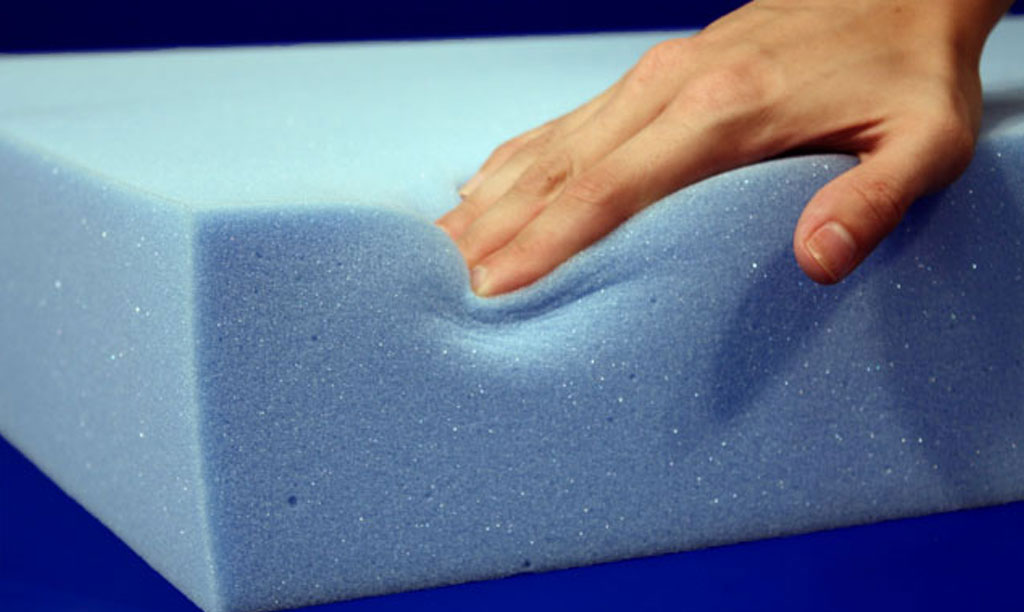
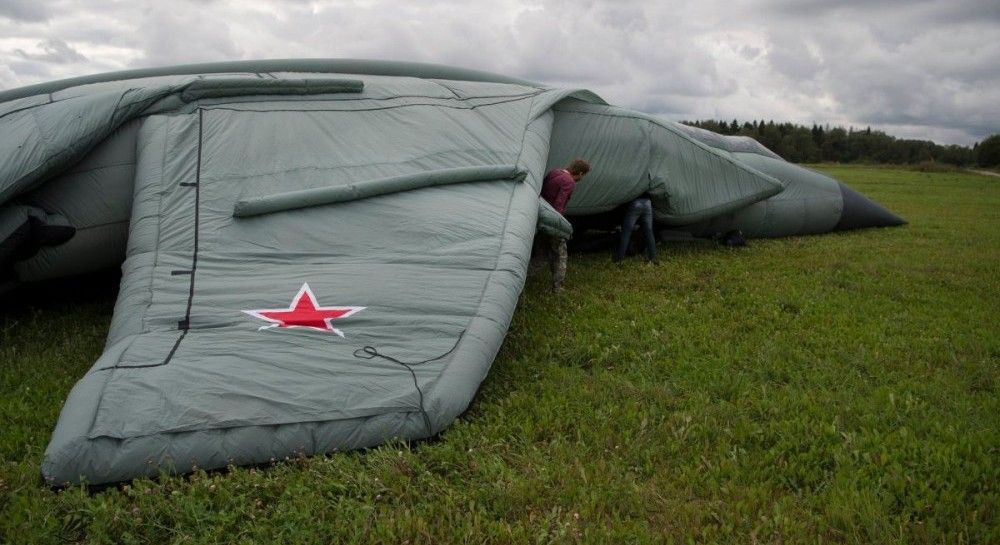
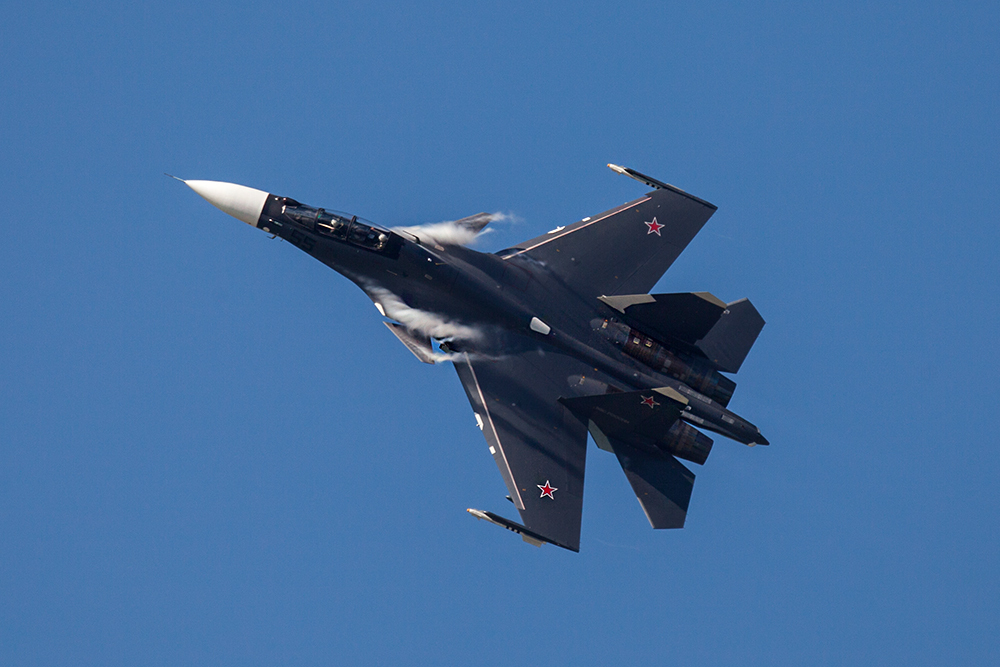
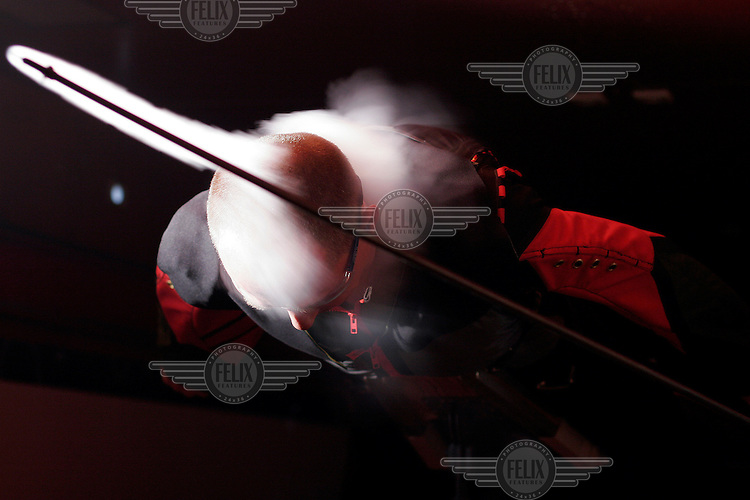
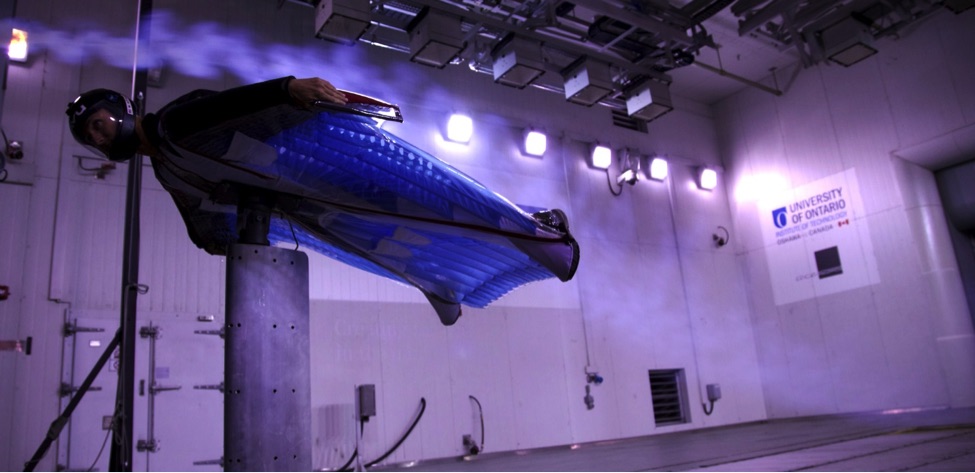
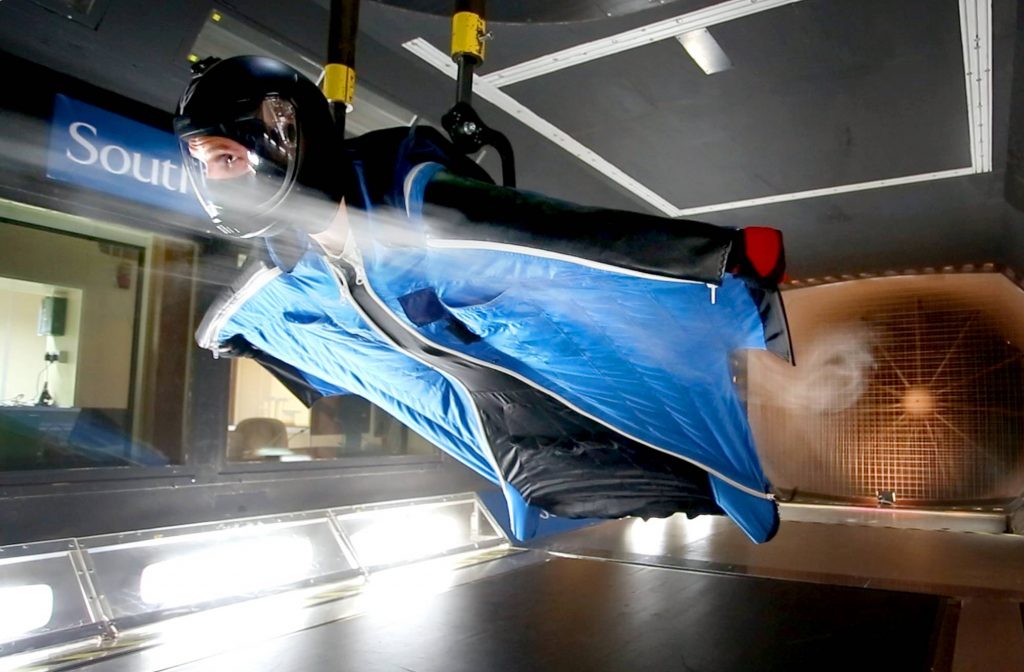

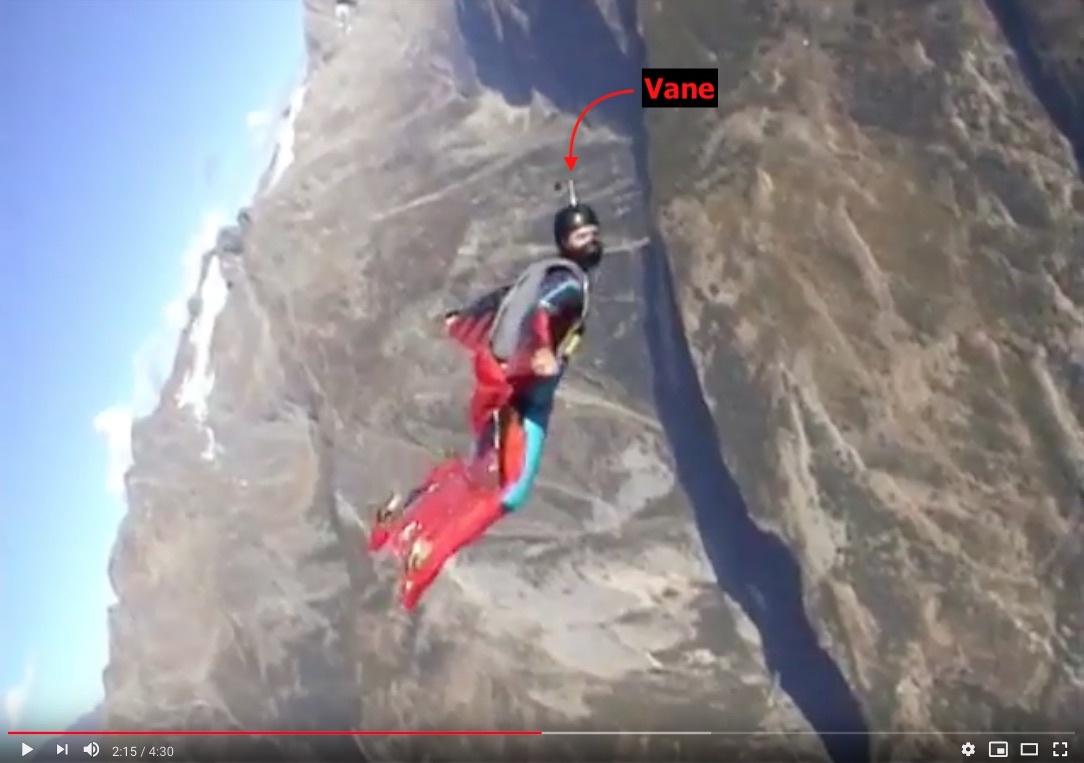


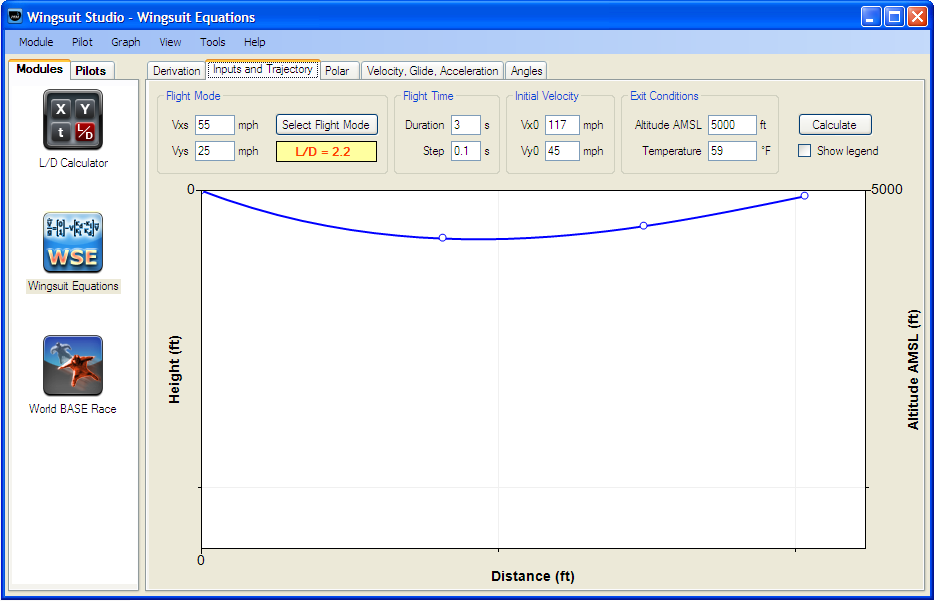
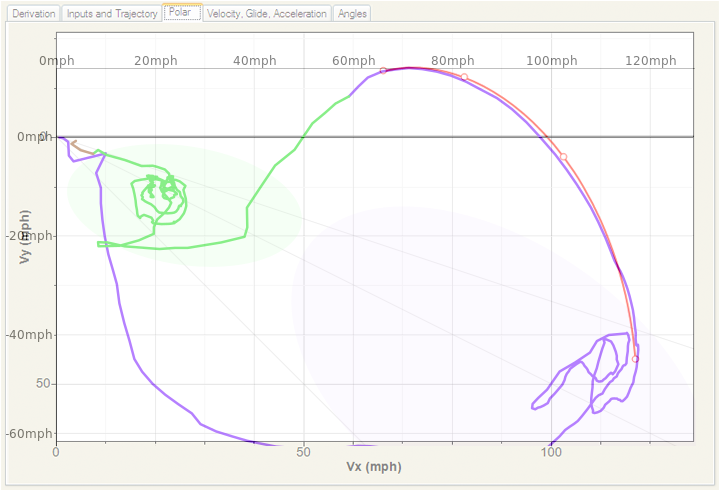
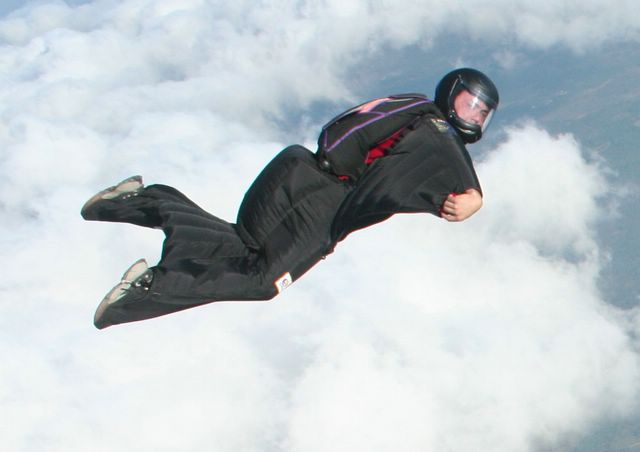
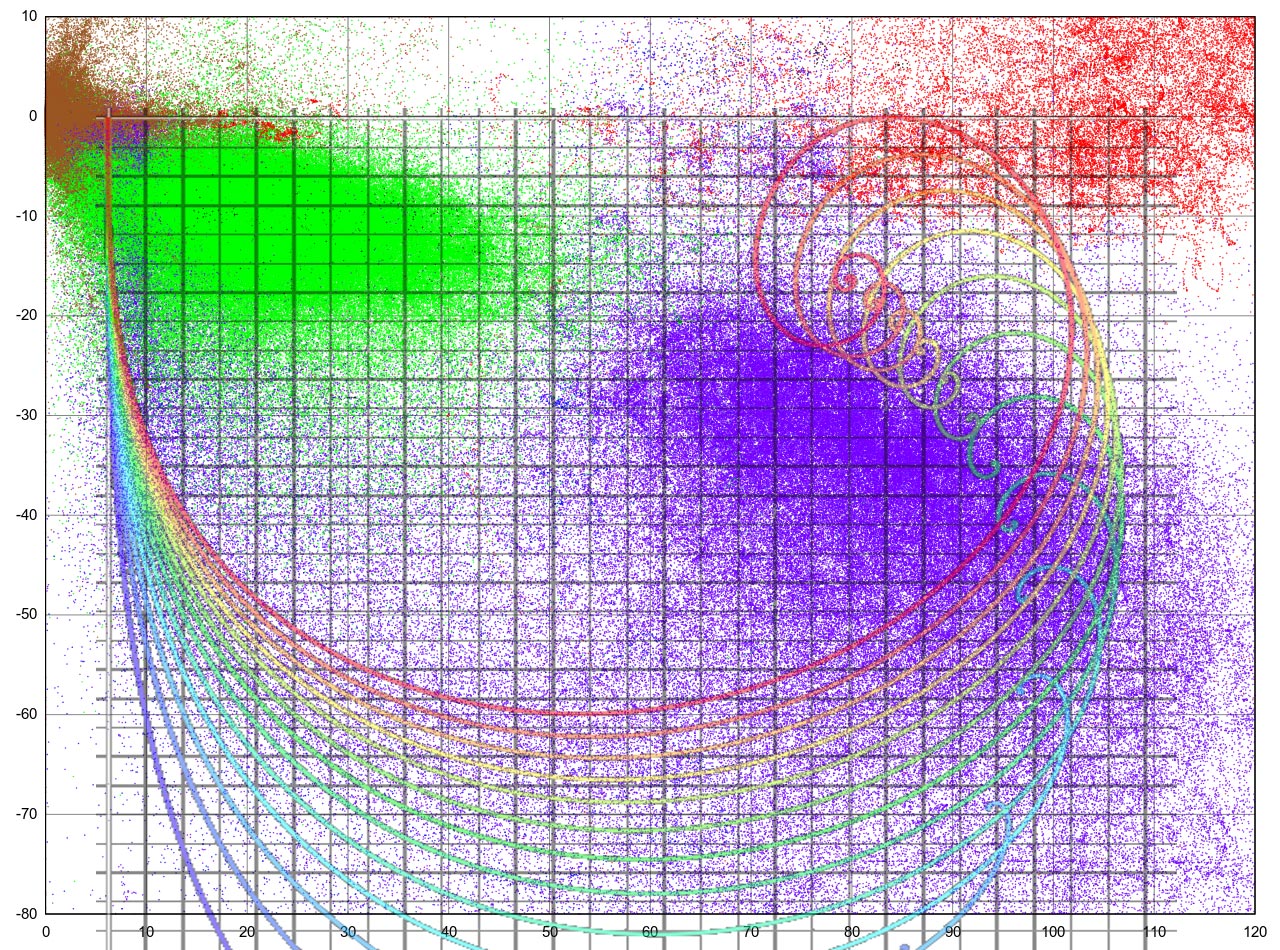

Wingsuit research
in Wing Suit Flying
Or maybe simply "Wing Systems, Worldwide".
"Hiring" aerospace engineers, mechanical engineers, scientists, people of any profession, foam cutting specialists, anyone... pornstars, ... Come on everybody! Everyone is hearty welcome.
It's magic... pure flying magic!
I don't have the prototype foam leg wing with me to show, but the basic idea should be clear from the discussion above. I'll see what sketches from the past I can find in my piles...
L/D Vario, Smart Altimeter, Rockdrop Pro, Wingsuit FAP
iOS only: L/D Magic
Windows only: WS Studio